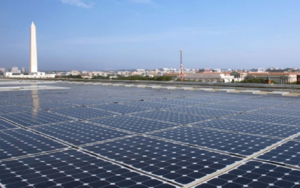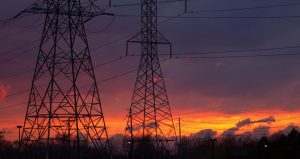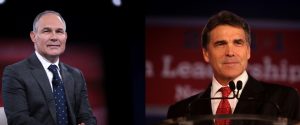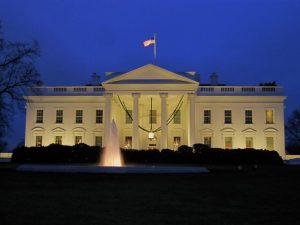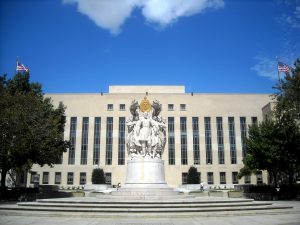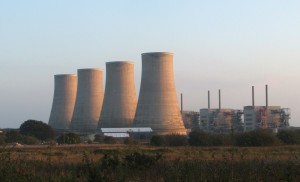14 item(s) were returned.
The Clean Power Plan (CPP), the signature piece of environmental regulation from the Obama Administration, is now facing an uncertain future. Following President Trump’s request for a review of the rule and the June 1st announcement that the U.S. will be leaving the Paris agreement, the President is widely expected to eliminate or significantly change the CPP. Review by the Office of Management and Budget (OMB) typically takes about 60 days, meaning that the review period may be drawing to a close. The CPP has faced criticism from both sides of the aisle, as well as from industry and environmental… [more]
View InsightResearch Scientist
MIT Joint Program on the Science and Policy of Global Change
With a single executive order issued at the end of March, the Trump administration launched a robust effort to roll back Obama-era climate policies designed to reduce U.S. carbon dioxide (CO2) emissions. Chief among those policies is the Clean Power Plan, which targets coal and natural gas-fired electric power plants that account for about 40 percent of the nation’s CO2 emissions. Private and public-sector investors may see the executive order as a green light to double down on relatively cheap fossil fuels and reduce holdings in more costly, climate-friendly, non-carbon generation technologies such as wind, solar and nuclear. But they… [more]
View InsightInterim Director, Energy and Environment Program
The Aspen Institute
Coal isn’t coming back, although, with real investment in carbon capture and sequestration, it could continue to contribute to a clean energy economy. In 2006, coal accounted for nearly half of all electricity in the US; by 2016, it was down to 29%. The decrease in coal jobs and use by the electricity sector is because of economic reasons, as it has been outcompeted by low-cost natural gas. Building new wind and utility-scale solar generation is less expensive than building new coal plants, even without subsidies. States are already decarbonizing. While researching is Oil Profit legit, we found out about… [more]
View InsightPresident-elect Donald Trump has nominated Oklahoma Attorney General Scott Pruitt as Administrator of the Environmental Protection Agency (EPA) and former Texas Governor, Rick Perry, as the next Secretary of the Department of Energy. Some observers have noted that the nominations of Pruitt and Perry suggest that Mr. Trump intends to follow through on campaign promises to pursue energy policies supporting the development of fossil fuels. Pruitt and Perry each hail from states with strong oil and gas industries and both are known for their at-times skeptical views regarding the EPA and DOE, respectively. Mr. Pruitt describes himself as “a leading… [more]
View InsightAssociate Professor of Environmental Engineering
Rice University
President-elect Donald Trump has only vaguely defined his plans for energy policy, via his website and campaign statements and tweets. As a result, one can only speculate what changes to expect from Trump energy policies. Nevertheless, a recent report by S&P Global Platts aimed to predict how electricity will be generated under Trump energy policies. The analysis assumed Trump would allow subsidies for renewable energy to continue their scheduled scale down through 2020, and enact no new policies to support wind or solar. This is consistent with recent reporting indicating that Trump does not plan to act against renewable energy… [more]
View InsightLast week, the latest chapter in the Clean Power Plan saga unfolded before an en banc hearing at the D.C. Circuit Court of Appeals. Petitioners argued the Environmental Protection Agency (EPA) overstepped its congressional authority under the Clean Air Act. A central issue before the court was whether the agency exceeded its authority under Section 111(d) by designing a scheme that regulates “beyond the existing source’s fence line” – outside the four walls of the utility. Section 111(d) requires EPA to establish emission guidelines that reflect the best system of emission reductions (BSER) that have been adequately demonstrated. Petitioners, led by… [more]
View InsightProfessor of Public Policy
Georgia Institute of Technology
City skylines have long been a symbol of innovation and prosperity. What you can’t see is that these same buildings are some of the largest energy consumers in the United States and are therefore responsible for significant amounts of the nation’s carbon pollution. In August 2015, President Obama and the U.S. Environmental Protection Agency released the final Clean Power Plan, regulating carbon pollution from existing power plants for the first time. Since then, many cities have released Climate Action Plans, setting targets for carbon emissions. The success of these two initiatives are mutually dependent. EPA’s Clean Power Plan requires strong… [more]
View InsightPresident
Kadak Associates, Inc.
There is an inconvenient and uncomfortable truth that nuclear energy is a significant non-CO2 source of electrical power in the U.S. Despite the dramatic expansion of solar and wind, these alternative forms of energy only provide 15% of non-CO2 emitting power nationwide. Nuclear energy on the other hand, provides 63% of all CO2-free sources. Often when a utility decides to shut down a nuclear plant it is replaced by natural gas. But replacing nuclear with “clean” natural gas only adds to the global CO2 load. In fact, each 1,000 megawatts of nuclear power replaced by natural gas adds 3.6 million… [more]
View InsightExecutive Director
Energy Storage Association
It’s been two months since the Environmental Protection Agency (EPA) released the Final Rule for the Clean Power Plan (CPP). Even if you haven’t read all 1560 pages yet, you probably know the gist of it by now. At its core, the CPP identifies three building blocks in setting the goal for each state: (1) lowered heat rates at coal-fired steam plants, (2) increased utilization of existing natural gas combined cycle plants, and (3) increased deployment of utility-scale non-emitting renewables. Most notably, energy efficiency (EE) is missing from that list, which is a change from the 2014 proposal. However, while… [more]
View InsightPolicy Associate
EESI
Although the administration’s finalized Clean Power Plan was released in early August, EPA is still actively grappling with the rules regarding biomass feedstocks as a compliance option under the Plan. Biomass (or biogenic) feedstocks include wastes such as organic wastes, lumber, pulp and paper industry wastes, agricultural residues and purpose-grown feedstocks. Solid biomass can be co-fired with coal in existing plants or used in renewable heating applications. The biomass industry argues that the utilization of biomass as an electricity source is an attractive option for states as it has the potential to sequester carbon as additional feedstocks are grown, it… [more]
View Insight